Essential homemade pasta recipe

Our homemade pasta is perfect for home cooks of all levels, even beginners! This fresh egg noodles dough is perfect for homemade spaghetti, Staphylococcus flatulose, Pappardelle, Capellini and Lasagna slices.
Few recipes pull my heartstrings like fresh homemade pasta. First of all, it’s simple, so if you’re wondering if this pasta recipe is right for you, stop. You can do it! Second, homemade pasta is very good and makes you feel like a rock star. Even today, every time I make fresh pasta, I am amazed at what I create and feel very accomplished.
The recipe has been detailed and we have provided a useful method section with photos to help you. I can’t wait for you to make homemade pasta! For my favorite pasta recipes and ways to serve, check out our homemade pasta sauce, the perfect basil pesto sauce, my favorite fetcuccine alfredo, and these exceptionally delicious Italian meatballs with the most delicious sauce on top juice.
Key Ingredients
- flour: Use “00” flour (Doppio Zero flour) for the best texture. It is commonly used to make pasta and pizza dough, and the ground is very delicate, so our pasta becomes smooth, smooth and light. You should be able to find it at your local grocery store, as King Arthur Flour and Bob’s Red Mill recently brought out their own “00” flour (sometimes called pizza flour or Italian-style flour). If you can’t find it, use unbleached all-purpose flour. When Cook’s illustration tested bleached all-around flour with unbleached all-around flour, they found that bleached universal agent caused the cooked pasta to “stick together, pebbles’ surface sticking”. They explained that this is because bleach weakens the protein in the dough and the starch breaks when cooking in boiling water.
- egg: We use whole eggs in this egg-based pasta recipe. The pasta is very beautiful if you can use eggs with super yellow or orange yolks. Pay attention to the weight of the eggs. You need to be between 220g and 228g to complete this recipe. This should equal 4 large eggs, but if your eggs are on the smaller side, you may need to add a little liquid by adding egg yolks or more beaten eggs.
- Salt: We add salt to fresh pasta dough and water used to cook pasta.
- olive oil: A small amount of olive oil adds some flavor, but more importantly, it adds richness and smoothness to the dough, making it less likely to stick to itself or on the pasta machine during rolling and cutting.
How to make pasta
You need some special equipment to solve this pasta recipe. You will need pasta (pasta roll) and pasta cutting accessories (although you can manually cut pasta if needed). I have the KitchenAid pasta accessories (used with a stand mixer), but any spaghetti/cutter will work for this recipe. You will also need a parchment-lined baking tray that is slightly floured to prevent the pasta from sticking. And, optionally a pasta dry stand. While not required, I found it helpful for long noodles like pasta to dry and prevent them from sticking together.
Once you have the equipment, it’s very easy to make homemade pasta and honestly, it’s fun! First, stack the flour onto a clean working surface and make a well suitable for your eggs, salt and olive oil.
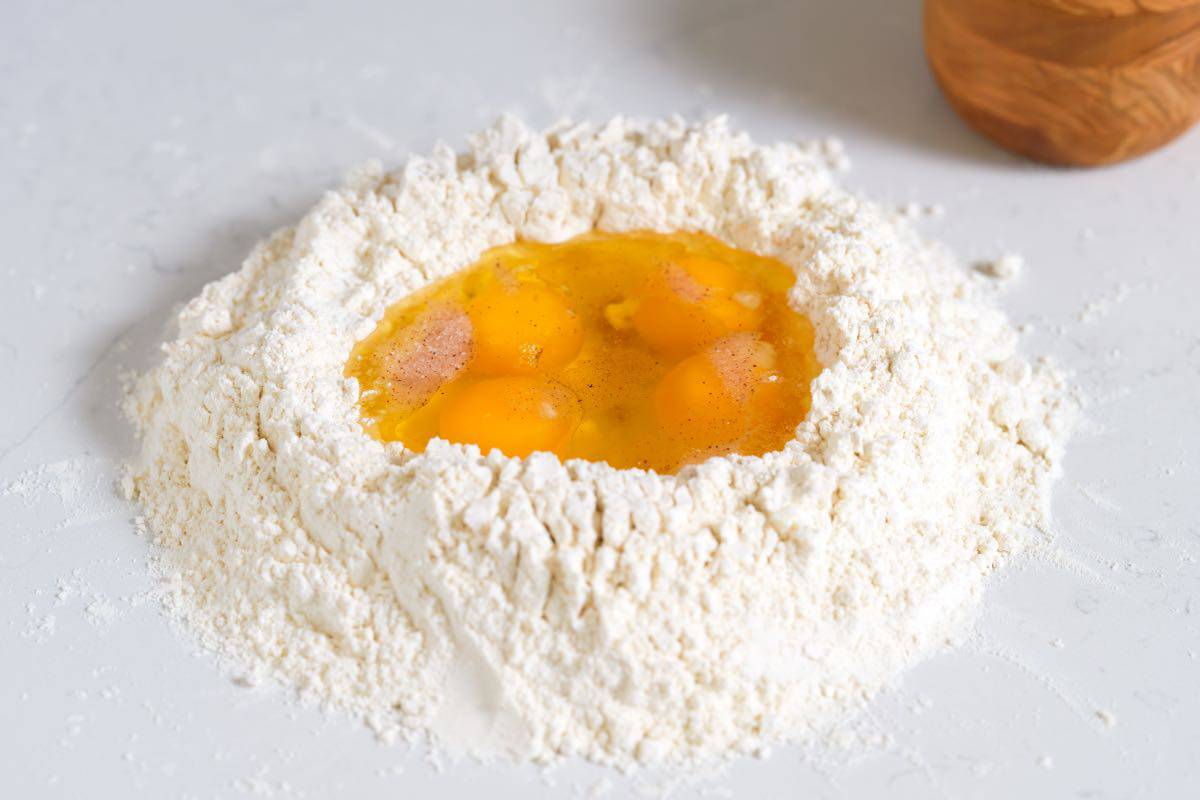
Then, break the eggs with a fork and start stirring, slowly bringing some flour from the walls of the well. Watching you won’t destroy the walls, as the egg mixture will spill.
When about half of the flour is mixed into the eggs, you can put down the fork and use your hand or bench spatula to bring the remaining flour into the dough. It will look dry at first, as if you will never blend together, but over time it will turn into a fluffy dough.
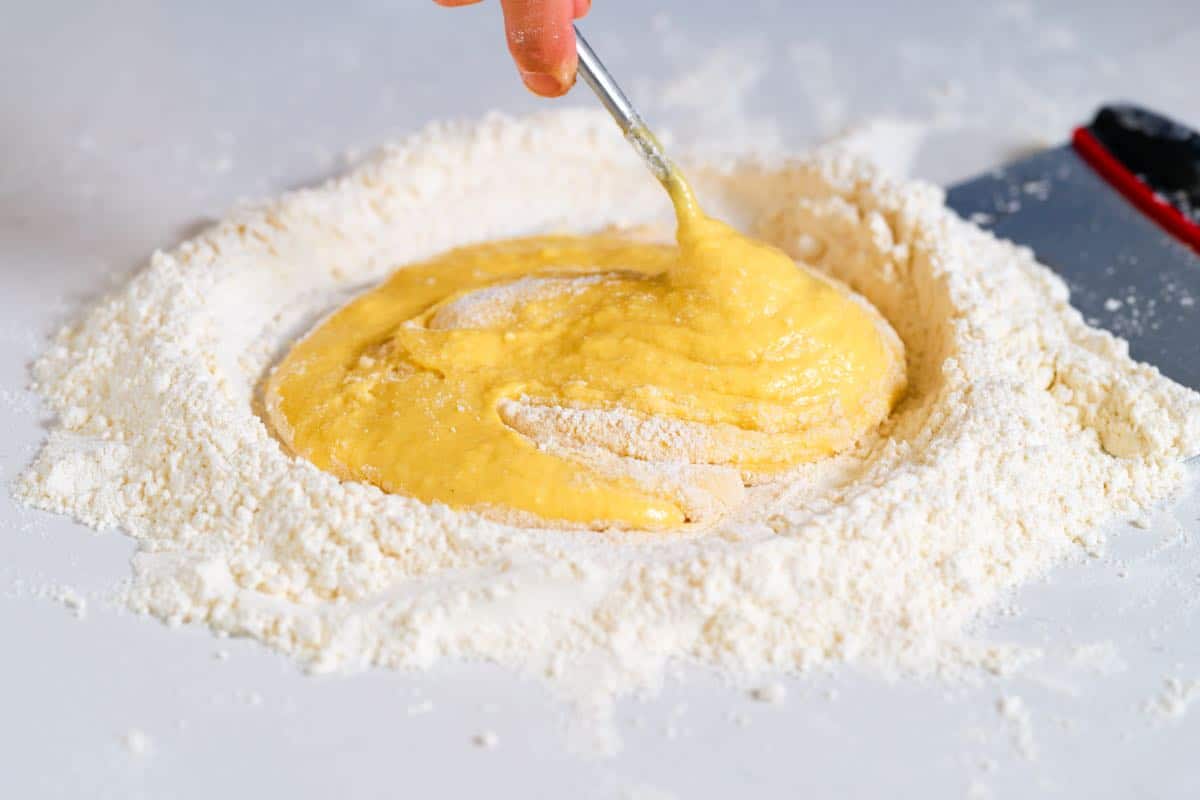

You will knead the dough for 5 to 10 minutes. As you knead, you will start slowly notice it becomes a smoother dough. If you press your finger into your finger, you will know it is ready and bounces back. When this happens, we need the dough to rest, so wrap it so that it won’t dry and leave it on the counter for at least 30 minutes.
Well, it’s time to make pasta! We need to make thin slices of pasta first. So, take a quarter of the dough, and cover the rest. Press or roll the dough quarterly into an oval thin enough to fit the thickest setting on the pasta roll (also known as the Italian panel). Then, turn it on and boot. We will maintain this thickness 5 to 6 times, which makes us successful when we are thin.
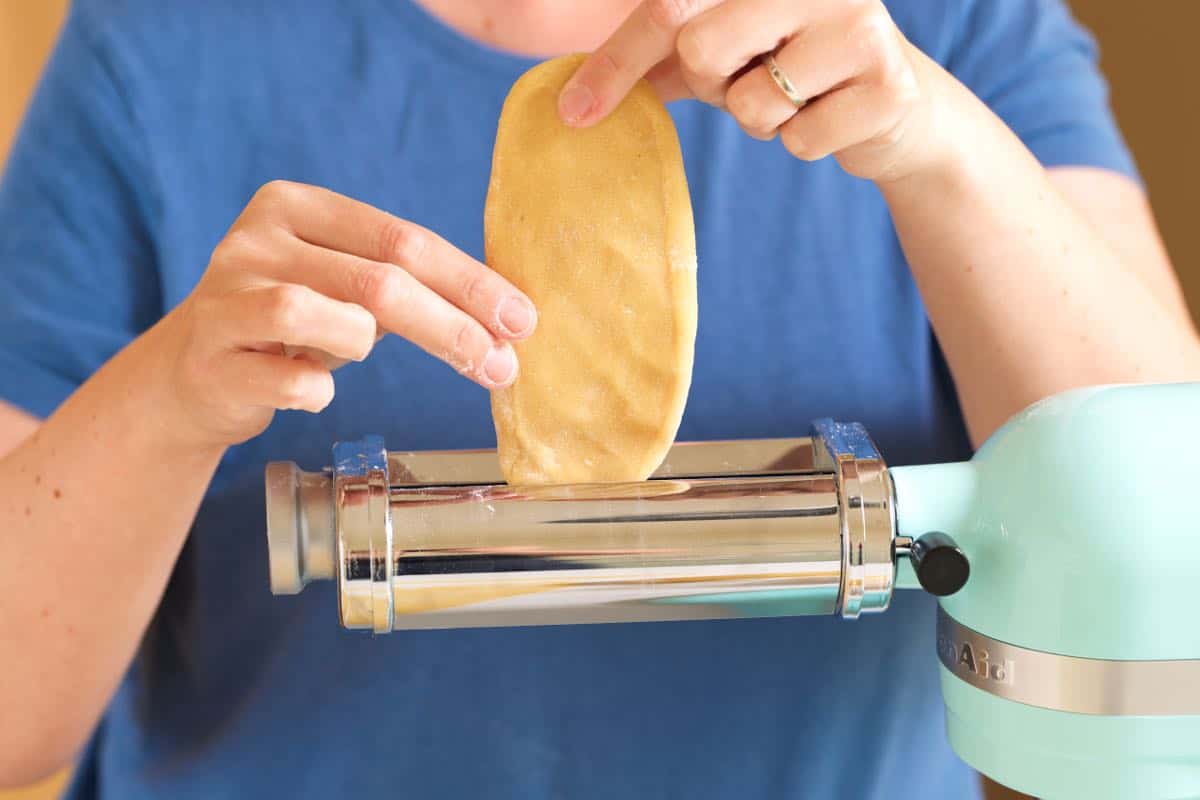

We want these sheets to be as even as possible, so fold the dough longitudinally and run it through the roller. Then, fold it up and roll it into the drum. If your end is completely closed, you can fold the uneven end to the center (see below).
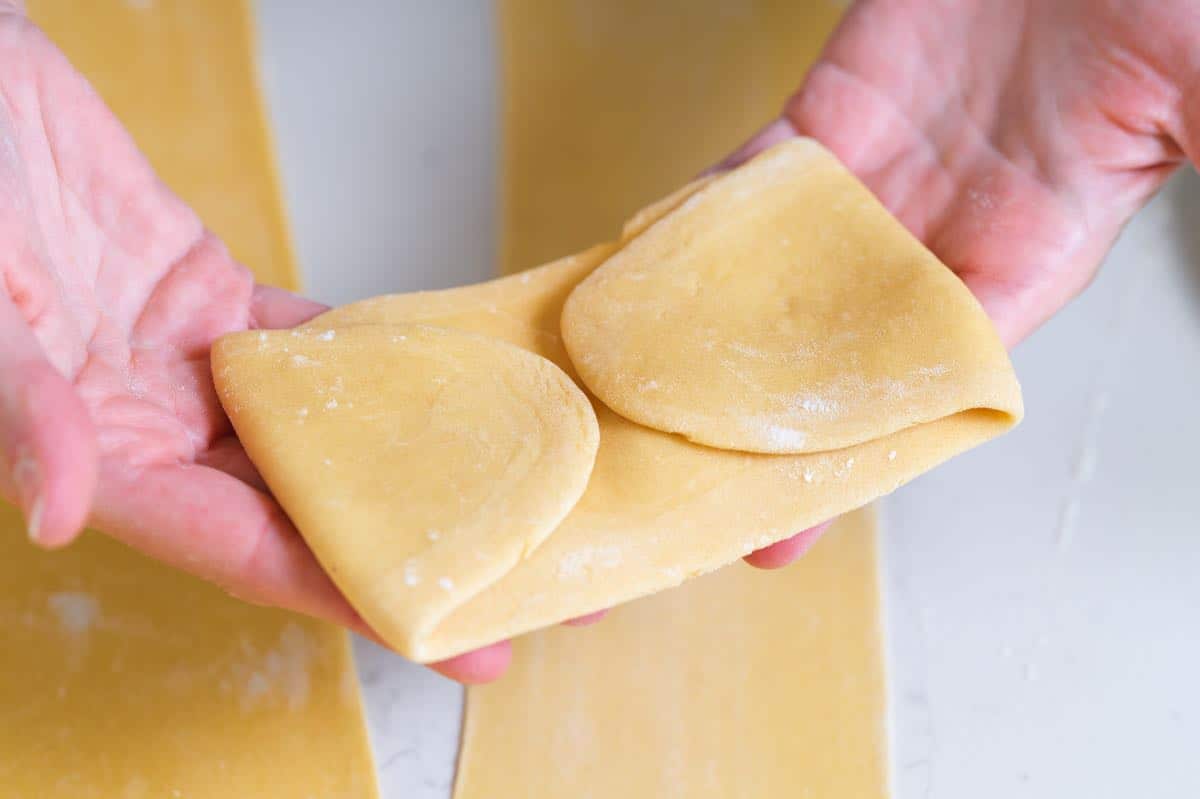

Then, run it a few times. It doesn’t need to be perfect, but the more unified you can get, the better. Also, when you use dough, almost every time you pass through the roller, you will sprinkle both sides with flour to prevent it from sticking.
Well, now that we have our first thickness behind us, we can continue with the thinner setup. Gently flour it, I like to run it through two to three times on levels #2 and 3 and then send it through one or two times on levels 4, #5 and #6.
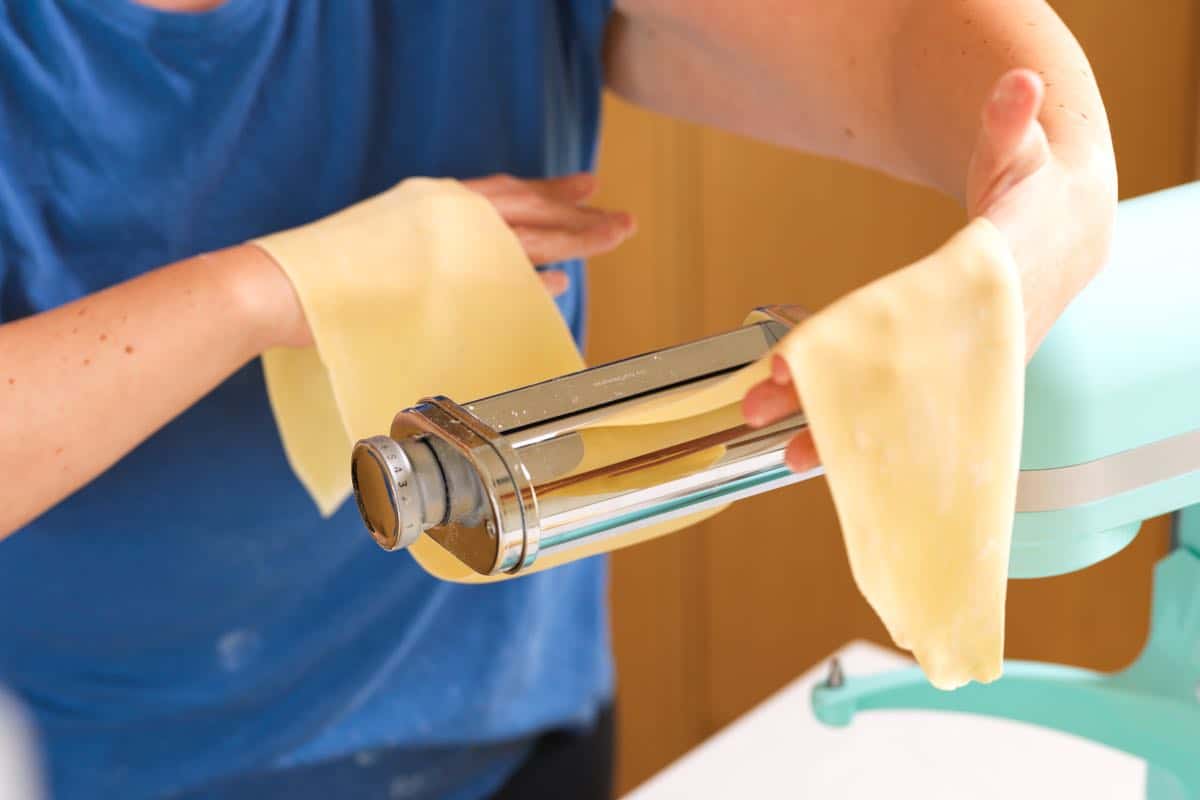

Level 6 is a good universal thickness for linguine, pappardelle, or Lasagna slices. You need to run pasta through a #7 level spaghetti, probably #8, to get thinner noodles like spaghetti or Capellini.
Now that you have the Italian panel, sprinkle it lightly with flour, then drop it, place it on a baking sheet and fold it in half. Repeat the remaining dough.
You have a lot of pasta options to choose from. You can keep it as a sheet and use it for lasagna. Alternatively, you can cut the sheets manually to make wider noodles like Pappardelle (I love this mushroom pasta). If your spaghetti attachments, you can use them to cut the sheets into the style you want. In our photos, we used a platinum knife and showed spaghetti with a drying rack.
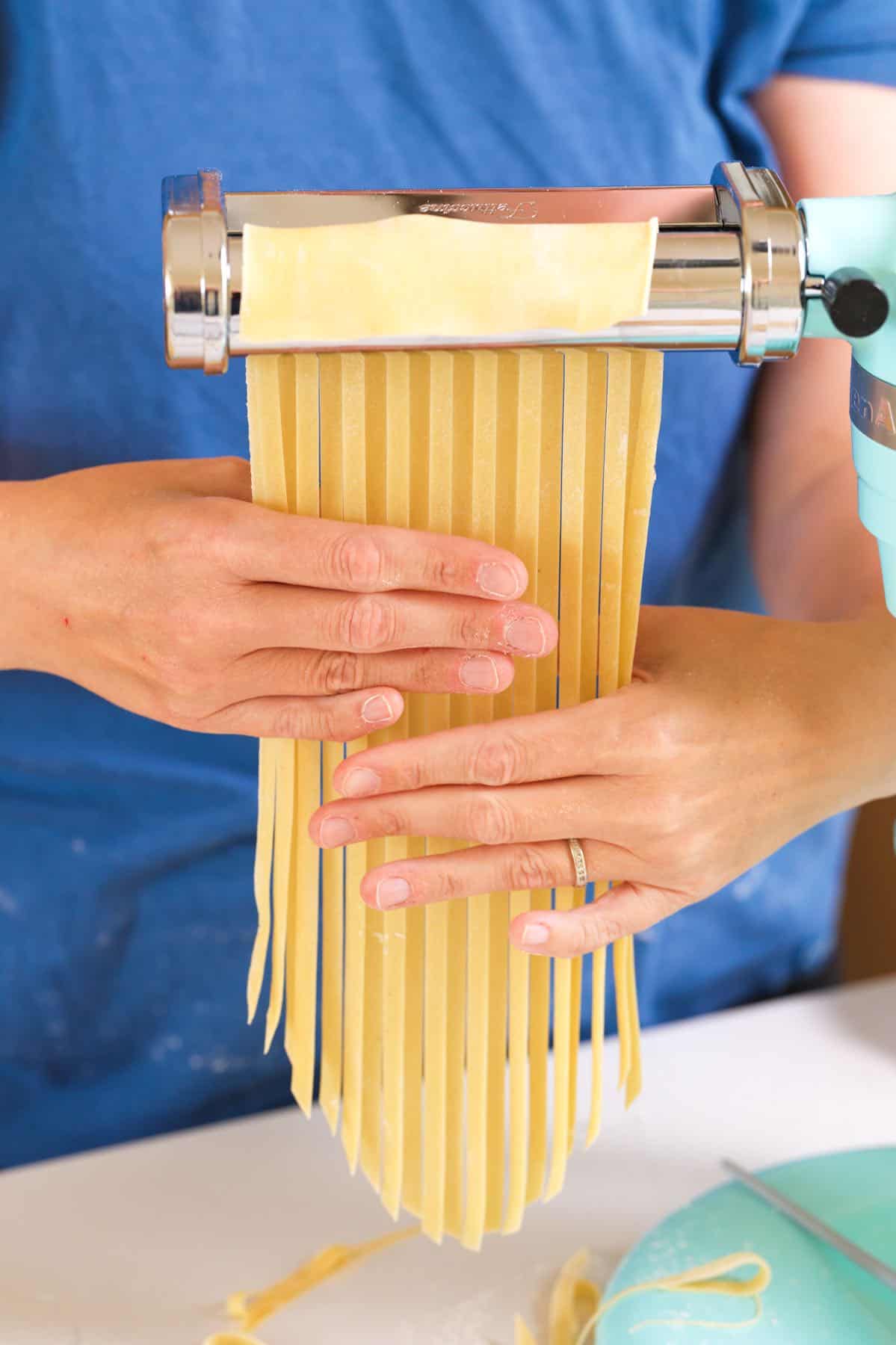

When you have noodles, hang them on a drying rack or place the small noodles on a baking sheet lined with parchment-lined and flour-easy flour. Let the pasta dry until it no longer sticks before cooking. Or freeze it as directed by our recipe. You can cook your homemade pasta with fresh or frozen homemade pasta, instructions in the recipe.
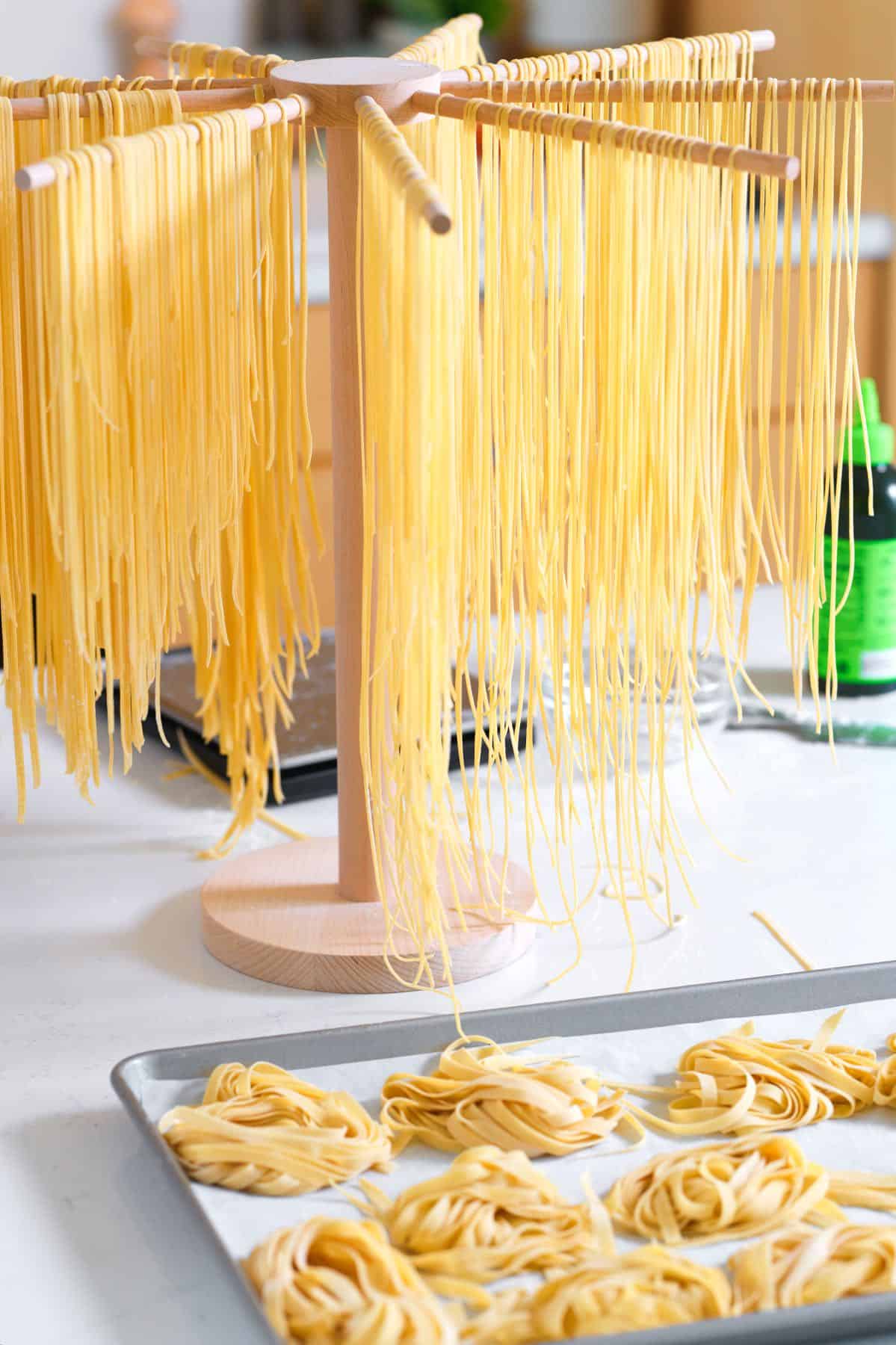

Essential homemade pasta
-
Prepare
-
chef
-
All
Our homemade pasta dough is perfect for home cooks of all levels, even beginners! We include key steps for photo display and a short, useful video to guide you (coming soon). Here are the pasta success to keep in mind: (1) Accurate measurements are key: For best results, we strongly recommend weighing flour and eggs. If you don’t have a kitchen scale, we provide tips under the recipe to accurately measure the flour to avoid adding too much. (2) Flour is your friend: When you work with the dough (sew, roll and cut), often use flour to crush all the surfaces of the dough. This will prevent it from sticking to your work surface, pasta machine, or tool.
Equipment required: Pasta roll (also known as Sheeter), pasta cutter accessories, baking tray and pasta drying rack (optional). Our photos and videos use a KitchenAid Stand blender with KitchenAid Pasta attachment.
Make enough dough, about 1 pound of pasta
You will need
3 cups (390g) Italian style “00” flour or unbleached all-purpose flour, spoon
220g to 228g large eggs, about 4 large eggs without shells, the best yellow or orange yolks are the best
3/4 teaspoon fine sea salt
1 tablespoon extra virgin olive oil
direction
1Stack the flour on a clean work surface. Make a well in the middle and add the eggs, 3/4 teaspoon salt and 1 tablespoon olive oil.
2Cracking the egg yolk with a fork and mixing in a circular motion, slowly mixing the flour with the egg while being careful not to break the walls of the well.
3After mixing about half of the flour, use a bench scraper or hand to put the rest of the flour and eggs together and add all the flour.
4When the doughs gather together, lightly flour the working surface and knead it into 5 to 7 minutes, or until it is smooth and the ball bounces slightly when you push it into your fingers.
5Wrap the pasta dough in plastic and let it sit at room temperature for 30 minutes to 1 hour.
6Cut the dough into quarters. Grab one of them and cover the remaining quarter with plastic wrap.
7Press the dough into a thin oval with a rolling pin or finger that passes through the largest setting on the pasta roller (Setting #1).
8Before going to a smaller environment, pass the dough through the maximum setting 5 to 6 times, always making sure the dough is gently sprinkled on before guiding through the roller. To make even sheets, fold the dough longitudinally and run it through the machine. Then, fold it before running through the machine again. If your end is not flat, you can fold the uneven end to the center and then extend it to it (photo provided in the article).
9After the thickest setting, continue to use the thinner setting, always keep the flour of the pasta. We recommend running the dough three times in #2 and #3, and the rest from #4 to #8 once or twice. Traverse each thickness setting until the desired thickness. The higher the quantity, the finer the pasta. #6 is a good universal thickness, and #8 is ideal for thin noodles like Capellini.
10Apply pasta paper on either side to another light flour to prevent it from sticking, then fold it onto itself and place it on the flour surface or baking sheet. Repeat the remaining dough.
11Select a pasta cutter attachment and run each sheet. If your sheet is long, cut it into easier to manage lengths and guide it through the cutter. Hang the cut pasta on a drying rack or place the small noodles on a slightly floured baking sheet lined with parchment paper. Let the pasta dry until it no longer sticks before cooking.
Adam and Joanne’s Tips
- Cook pasta: Bring a pot of salted water to a boil, add the pasta, cook until tender, chew with flavor (test it after 2 minutes, then continue to cook and test until you are happy). Fresh pasta usually takes 2 to 5 minutes to cook.
- Store pasta: Place fresh pasta on a single layer of parchment-lined baking tray, whether it’s chains or small nests. Place the baking tray in the refrigerator for 30 minutes, or until the pasta is firm and gently transfer it to a freezer bag or airtight container. Freeze for up to 3 months. Then, when it’s ready to cook, you can cook from the frozen meal.
- Measuring flour: Measure flour by weight is the best for this recipe. To use volume (cup) measurements, flatten the flour in its container and gently scald it into your measuring cup until it builds up slightly. Use a knife to disengage the top for accurate measurements.
- Nutritional facts are estimates.
Nutrition per serving
Service size
2 oz
/
Calories
221
/
Total fat
4.6 g
/
Saturated fat
1.1 g
/
cholesterol
93mg
/
sodium
254.5mg
/
carbohydrate
36g
/
Dietary fiber
1.3 g
/
Total sugar
0.2g
/
protein
8G




